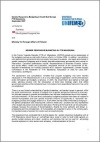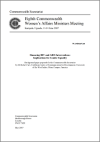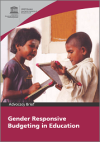FOUND 17
This fact sheet was produced by UNIFEM in 2007 under the UNIFEM sub -regional programme "Gender-Responsive Budgeting in South East Europe: Advancing Gender Equality and Democratic Governance through Increased Transparency and Accountability launched in late 2006.
This paper explains what GRB is, what GRB work has help achieved and how it can further contribute to achieving gender equity and equality.
This book aims to contribute to the evolving understanding of public expenditure management as a political, rather than a purely technical, process. In particular, it explores the ways in which a rights approach can contribute to strengthening pro-poor voice and outcomes in budget processes.
Systematization of the project, "Gender Equity: Citizenship, Labor and Family and Fundar". The assessment was carried out in conjunction with the Ministry of Health, as part of a reflection process for introducing a gender perspective into the planning and budgeting of the health sector in Mexico.
This is an extensive summary of a report published in Swedish in December 2006, which was produced and written mainly by Elis Envall, Senior Advisor and Annika Eriksson, PhD at the National Board of Health and Welfare, Sweden.
Background paper prepared in May 2007 for the Commonwealth Secretariat by Dr Robert Carr, Caribbean Centre of Communication for Development, University of the West Indies, Mona Campus, Jamaica Commonwealth Secretariat.
This document, represents the gender analysis that was conducted on Tanzania's 2003-2004 National Budget.
This advocacy brief published in 2010 by UNESCO Asia and Pacific Regional Bureau for Education was written by Reina Ichii.
The Health Rights of Women Assessment Instrument (HeRWAI) is a tool developed by the Humanist Committee on Human Rights (HOM) in 2006 to enhance lobbying activities for better implementation of women's health rights.







